The Avenue Uniting Church
cnr The Avenue & Blackburn Road, Blackburn
William Stone, Melbourne, 1879, for Congregational Church, St Kilda
Restored & installed in present location 1973 members of the congregation
2 manuals, 13 speaking stops, 3 couplers, mechanical action
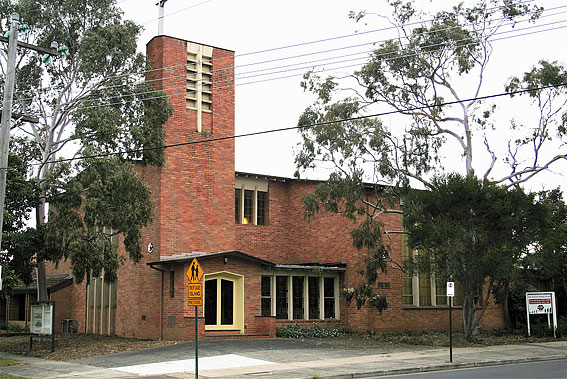
The Avenue Uniting Church, Blackburn
[Photograph by Trevor Bunning (October 2008)]
Historical and Technical Documentation by John Maidment
© OHTA 1985, 2007, 2008 (last updated October 2008)
This former Presbyterian Church was designed by the Melbourne architect Keith Reid. The foundation stone was laid in April 1959 and the building opened on Sunday 21 February 1960. The Revd Fred Strickland, who was Minister of the church at the time, has stated that it followed the plan of St Columba's Presbyterian Church, Sale, which was designed by the same architect. In both instances, the choir was placed in a gallery at the rear of the church in order that it should sing with, rather than into, the congregation.1
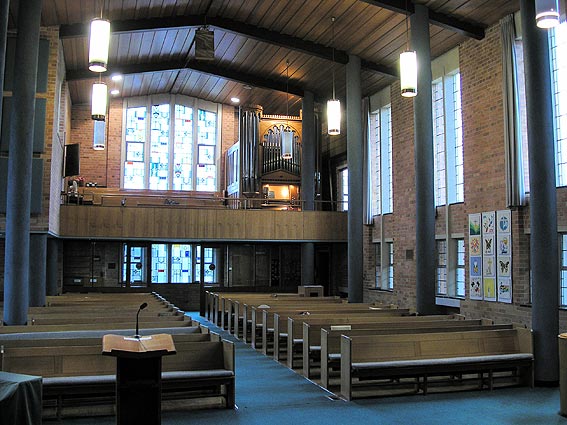
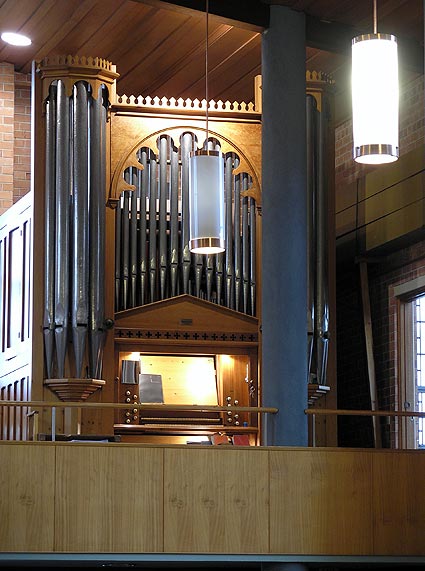

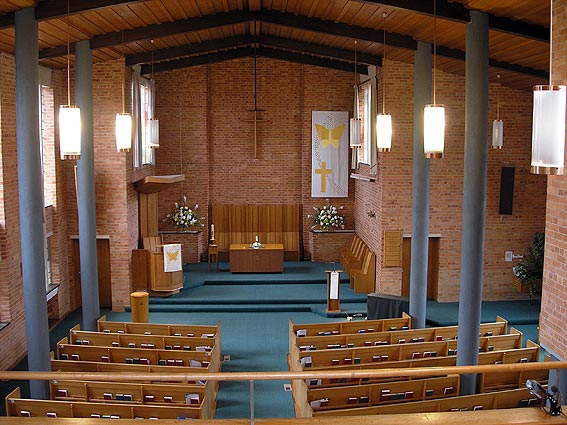
[Photographs by Simon Colvin (May 2007)]

The builder's nameplate
Photograph by Trevor Bunning (October 2008)
This organ was built by William Stone, of St Kilda, for the Congregational Church, Alma Road, St Kilda, where it was opened on 20 March 1879 by P.C. Plaisted.2 A new church, St John's Congregational Church, was later built in South St Kilda and the organ moved there c.1888.3 This organ was purchased in early 1973 by The Avenue Church congregation for $1,200.4 It was moved to Blackburn, restored and re-erected by members of the congregation under the direction of Bill Ralph; Laurie Pipe Organs were responsible for regulating the action and pipework.5 The re-opening recital was given by Ted King on 5 August 1973.6
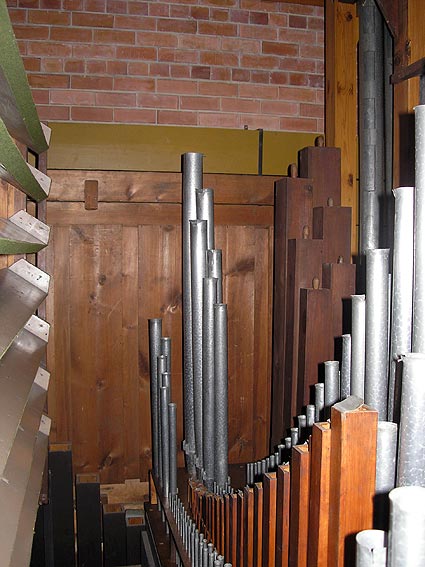
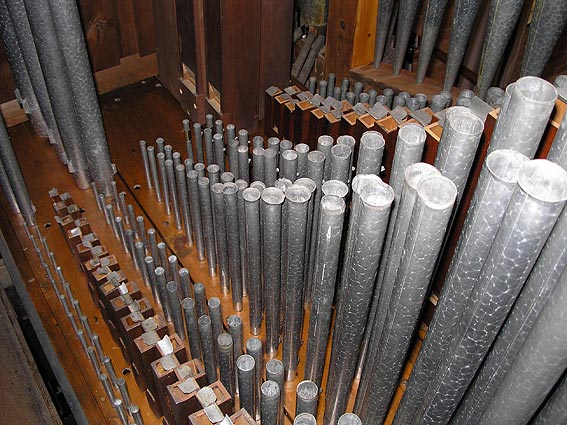
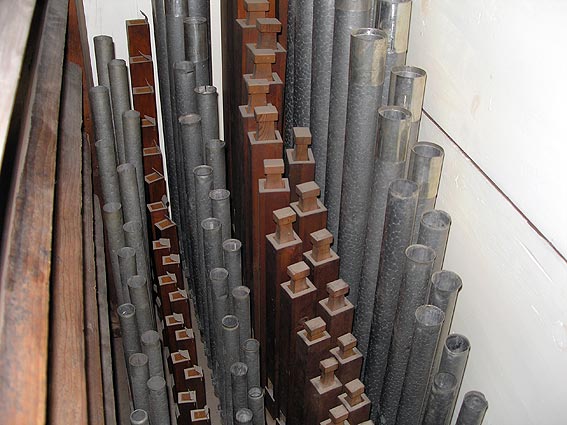
[Photographs by Simon Colvin (May 2007)]
This is the only organ built by William Stone which is known to survive intact. It retains its original bellows, including hand-blowing, and the pipework is still cone tuned. All of the metal pipework is of spotted metal including the front pipes. Work carried out in 1973 included stripping of dark varnish from the case timbers, the removal of gold paint from the front pipes, and the raising of wooden supports in the side towers to cover the pipe tops. This is a delightful and musical example of 19th century colonial organ-craftsmanship.
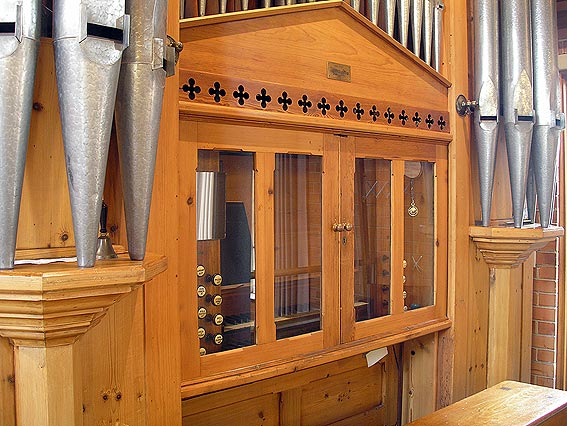

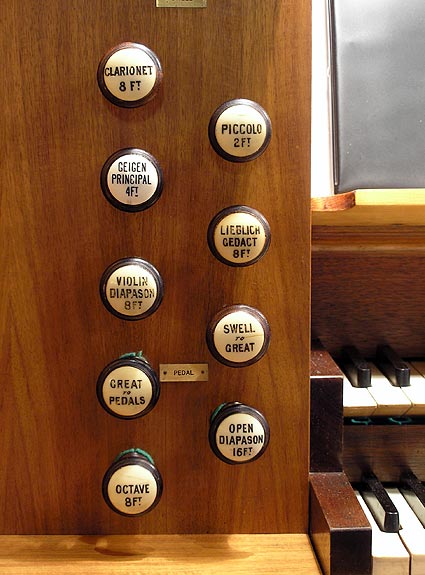
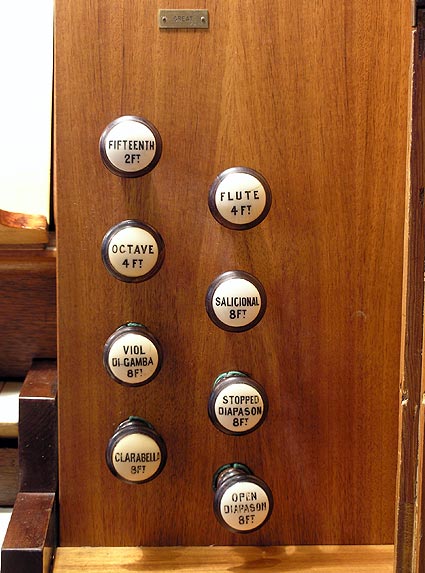
Console details
[Photographs by Simon Colvin (May 2007)]
| GREAT Open diapason Stopped diapason Clarabella Viol di gamba Salicional Octave Flute Fifteenth SWELL Violin diapason Lieblich gedact Geigen principal Piccolo Clarionet PEDAL Open diapason Octave |
8 8 8 8 8 4 4 2 8 8 4 2 8 16 8 |
CC-BB TC TC TC TC gvd.bass TC * |
compass: 54/30
2 couplers
3 composition pedals to great
trigger swell lever
mechanical action.7
* an octave coupler, now disconnected
1 Notes, John Henwood.
2 E.N. Matthews, Colonial organs and organbuilders (Carlton: Melbourne University Press, 1969), p.149.
3 Ibid.
4 Notes, John Maidment.
5 Ibid.
6 Victorian Organ Journal, vol.1, no.9 (July 1973), p.11.
7 Specification noted John Maidment, 1973.